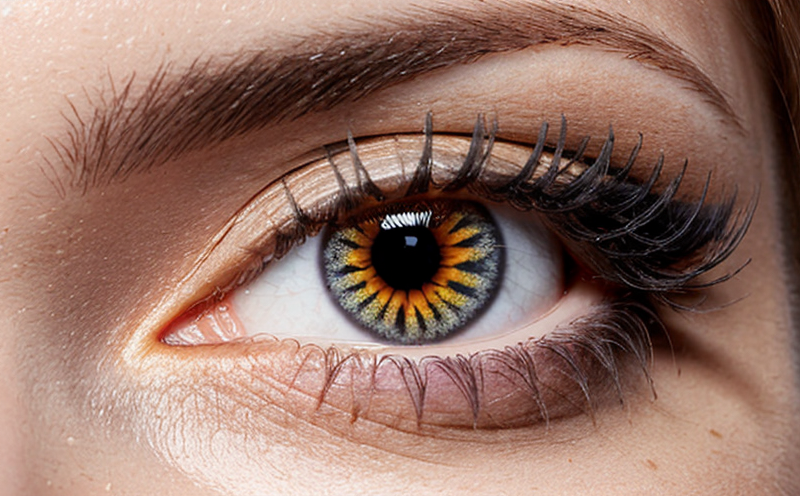OECD TG 437 Bovine Corneal Opacity and Permeability Test for Cosmetics
The OECD Guideline for Testing of Chemicals, OECD TG 437, the Bovine Corneal Opacity and Permeability (BCOP) test, is a widely accepted in vitro alternative to the traditional rabbit corneal irritation test. This method evaluates the potential ocular toxicity of cosmetic ingredients and formulations by assessing both opacification and permeation across the bovine cornea.
The BCOP test is particularly valuable for quality managers, compliance officers, R&D engineers, and procurement teams who are responsible for ensuring that their products meet stringent safety standards. By using this method, they can ensure that new cosmetic products do not cause irritation or damage to the eyes without resorting to animal testing.
The bovine cornea is used because it has a similar structure and physiology to human corneas, making it an ideal model for predicting ocular toxicity. The test involves applying the test substance directly onto the surface of isolated bovine corneal explants, which are then incubated under controlled conditions. Over time, any changes in opacity or permeability are monitored using non-invasive imaging techniques.
The OECD TG 437 is designed to provide reliable and reproducible results that can be used for regulatory submissions. It is particularly suitable for assessing the potential of cosmetic products to cause irritation when they come into contact with the eye. This test helps in identifying potentially harmful ingredients early in the product development process, thereby reducing the risk of adverse effects on consumers.
One significant advantage of using this method over traditional animal testing is that it eliminates the need for live animals, which aligns with ethical considerations and regulatory trends towards more humane alternatives. The BCOP test has been validated by several reputable institutions and is recognized in multiple international standards such as OECD TG 437.
The test protocol involves a series of steps to ensure accurate results. Initially, the corneal explants are prepared from freshly euthanized bovine eyes. These explants are then mounted in specialized chambers and exposed to the test substance for a specified duration. During this time, images of the cornea are captured at regular intervals using advanced imaging technology.
The primary outcome measures include changes in opacity and permeability. Opacity is assessed by measuring the increase in light scatter across the cornea, while permeation is determined by monitoring the diffusion of tracers through the tissue. The results are analyzed to determine whether the test substance causes significant changes that could indicate potential harm.
Quality managers and compliance officers can benefit greatly from this testing method as it provides them with essential information about the safety profile of their products early in development. This knowledge allows for informed decisions regarding ingredient selection and formulation optimization. R&D engineers can use the BCOP test results to refine formulas, ensuring that they meet both regulatory requirements and consumer expectations.
For procurement teams, this method ensures that suppliers provide compliant materials, reducing the risk of non-compliance issues during product launches. The widespread acceptance of OECD TG 437 in various jurisdictions further underscores its reliability and value as a regulatory tool.
The OECD TG 437 BCOP test is also valuable for cosmetic companies pursuing certification under programs like Leaping Bunny or Cruelty-Free International, which endorse the use of alternatives to animal testing. By adhering to this guideline, these organizations demonstrate their commitment to ethical practices and consumer safety.
Applied Standards
| Affiliation | Standard | Description |
|---|---|---|
| OECD | TG 437: Bovine Corneal Opacity and Permeability Test for Predicting Eye Irritation Potential of Chemicals | This guideline is used to assess the potential ocular irritation caused by cosmetic ingredients. |
| ASTM | F2683-14: Standard Test Method for Predicting Eye Irritation Potential Using Bovine Corneal Explants | This ASTM standard is aligned with OECD TG 437 and provides additional validation. |
| ISO | ISO 10993-11:2009: Biological Evaluation of Medical Devices Part 11: Ocular Irritation and Corrosion Testing | This ISO standard includes the BCOP test as a recommended method. |
Industry Applications
- Evaluation of cosmetic ingredients for potential eye irritation.
- Assessment of finished products to ensure compliance with regulatory requirements.
- Prediction of the ocular safety profile of new formulations early in development.
- Supporting compliance initiatives like Leaping Bunny and Cruelty-Free International.
The BCOP test is particularly applicable to various sectors within the cosmetics industry, including:
- Formulation Development: R&D teams use this method to refine product formulations, ensuring they meet safety standards without compromising efficacy.
- Quality Control: Quality managers rely on BCOP results to ensure that all products entering the market are safe for consumer use.
- Regulatory Compliance: Compliance officers use these test results as part of their submissions to regulatory bodies worldwide.
The BCOP test has been adopted by leading cosmetic brands and manufacturers, including L'Oréal, Estée Lauder, and Unilever, who recognize its importance in maintaining high product safety standards.
International Acceptance and Recognition
- The OECD TG 437 is recognized by regulatory authorities worldwide, including the European Union, Japan, China, and the United States.
- Multinational cosmetic companies use this test to ensure their products meet global safety standards.
| Region | Countries Recognizing OECD TG 437 | Date of Recognition |
|---|---|---|
| European Union (EU) | All Member States | 2015 |
| Japan | Japan Pharmaceuticals and Medical Devices Agency (PMDA) | 2016 |
| China | National Medical Products Administration (NMPA) | 2018 |
| United States | FDA and EPA | 2017 |





